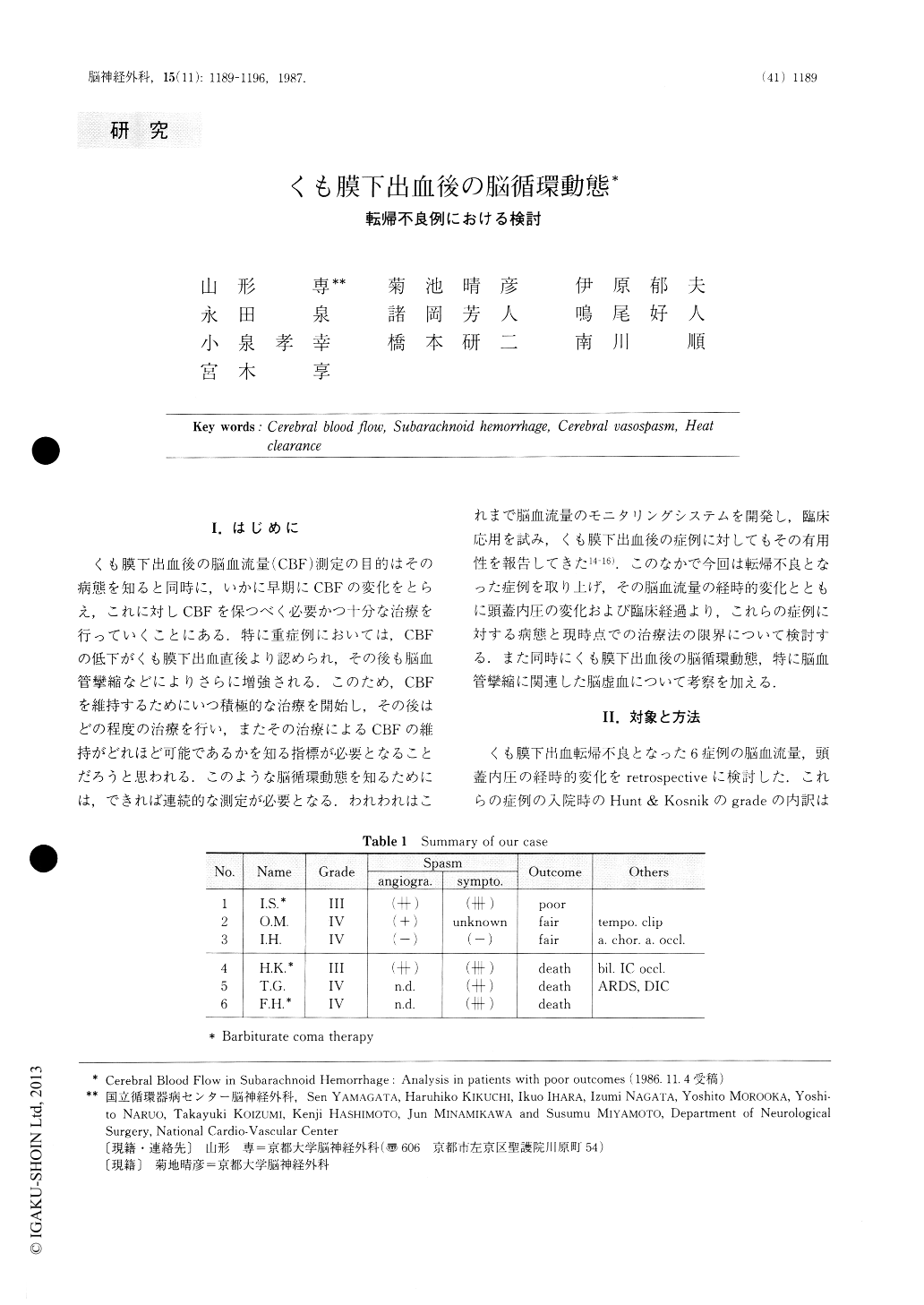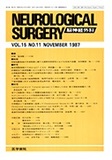Japanese
English
- 有料閲覧
- Abstract 文献概要
- 1ページ目 Look Inside
I.はじめに
くも膜下出血後の脳血流量(CBF)測定の目的はその病態を知ると同時に,いかに早期にCBFの変化をとらえ,これに対しCBFを保つべく必要かつ十分な治療を行っていくことにある.特に重症例においては,CBFの低下がくも膜下出血直後より認められ,その後も脳血管攣縮などによりさらに増強される.このため,CBFを維持するためにいつ積極的な治療を開始し,その後はどの程度の治療を行い,またその治療によるCBFの維持がどれほど可能であるかを知る指標が必要となることだろうと思われる.このような脳循環動態を知るためには,できれば連続的な測定が必要となる.われわれはこれまで脳血流量のモニタリングシステムを開発し,臨床応用を試み,くも膜下出血後の症例に対してもその有用性を報告してきた14-16).このなかで今回は転帰不良となった症例を取り上げ,その脳血流量の経時的変化とともに頭蓋内圧の変化および臨床経過より,これらの症例に対する病態と現時点での治療法の限界について検討する.また同時にくも膜下出血後の脳循環動態,特に脳血管攣縮に関連した脳虚血について考察を加える.
Cerebral blood flow (CBF) of 6 patients with poor outcome after subarachnoid hemorrhage is analyzed.
Neurological grades of these patients were grade III in 2 and grade IV in 4 patients, and subarachnoid hemorrhage on CT was diffuse and thick in all patients.Cerebral blood flow was continuously measured for 7 to 19 days by the thermal diffusion flow probe with a peltier stack which was left on the cerebral cortex at the surgery for ruptured aneurysm. Moreover, CBF studies by cold xenon CT and 133Xe inhalation methods were also performed in discussing cases. At the same time intracranial pressure was monitored.

Copyright © 1987, Igaku-Shoin Ltd. All rights reserved.


